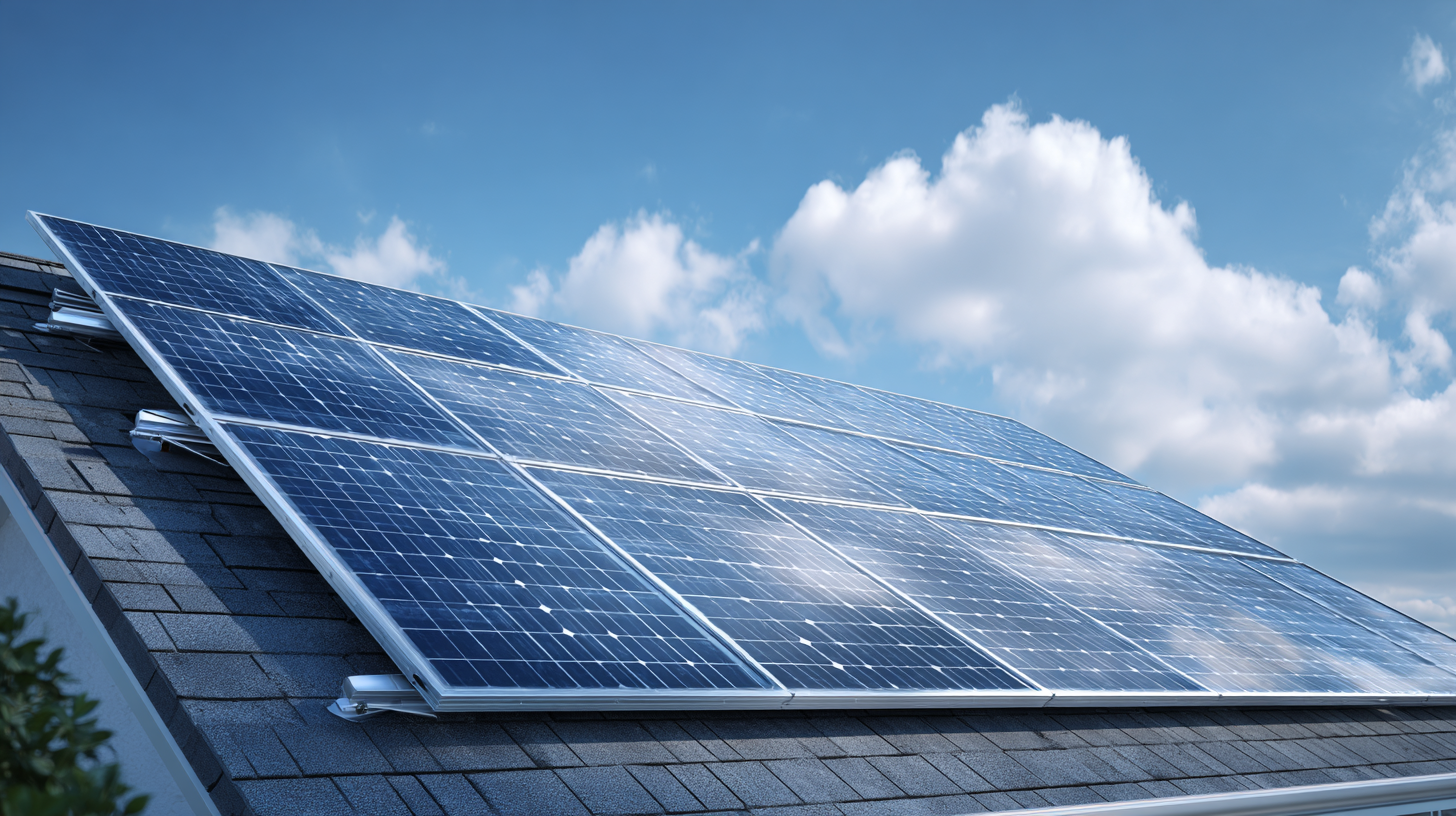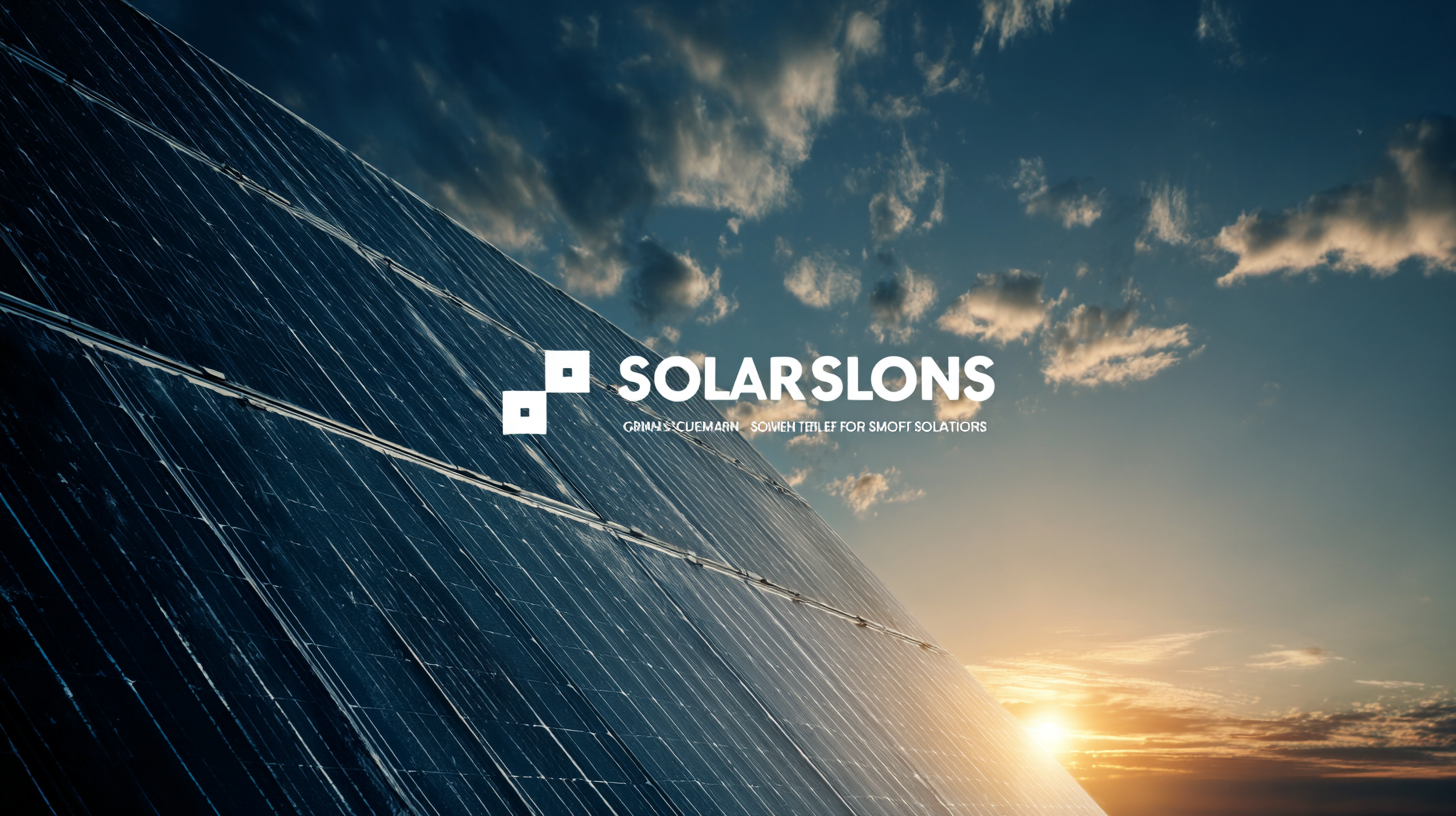Tel : 94870 36000, 94860 36000, 94890 36000
A Comprehensive Comparison of the Best Solar Panels Solutions for Your Home
In an era where sustainability is paramount, choosing the right Solar Panels Solutions for your home can significantly impact both your energy costs and environmental footprint. With a myriad of options flooded in the market, understanding which solar panel system best suits your needs can be overwhelming. This blog aims to provide a comprehensive comparison of the top solar panel solutions available, highlighting their features, efficiencies, and costs. Emphasizing the reliability of globally trusted Chinese manufacturing, we will explore how these solutions maintain consistent quality while catering to diverse household requirements. By the end of this article, you will be equipped with valuable insights to make an informed decision, ensuring your investment in solar energy is both efficient and sustainable.

Table of Contents
[Hide]
Overview of Solar Panel Types and Their Suitability for Residential Use
When considering solar panels for residential use, it's crucial to understand the different types available and their suitability for your home. The two most common types are monocrystalline and polycrystalline panels.
 Monocrystalline panels, known for their high efficiency and sleek aesthetics, are ideal for homeowners with limited roof space. They convert more sunlight into electricity compared to their polycrystalline counterparts, making them a solid choice if you want maximum output in a compact area.
Monocrystalline panels, known for their high efficiency and sleek aesthetics, are ideal for homeowners with limited roof space. They convert more sunlight into electricity compared to their polycrystalline counterparts, making them a solid choice if you want maximum output in a compact area.
On the other hand, polycrystalline panels are often more budget-friendly and perform adequately in moderate to high sunlight conditions. While they may take up more space due to their slightly lower efficiency, they are a viable option for homeowners with larger roofs looking for cost-effective solar solutions.
Additionally, thin-film solar panels offer flexibility and lightweight options, making them suitable for unconventional installations, such as on curved surfaces or rooftops with weight restrictions. By evaluating these options, homeowners can choose the type of solar panel that best aligns with their energy needs and physical constraints.
Key Factors to Consider When Choosing Solar Panels for Your Home
When choosing solar panels for your home, several key factors must be considered to ensure optimal performance and cost-effectiveness. One essential aspect is the panel efficiency, which measures how much sunlight is converted into usable electricity. According to the National Renewable Energy Laboratory (NREL), the best solar panels on the market today have efficiencies exceeding 22%, with premium brands such as SunPower leading the way. Investing in higher efficiency panels can lead to greater energy production, especially in areas with limited rooftop space.
Another critical factor is the durability and warranty of the solar panels. On average, most manufacturers offer a warranty of 25 years, ensuring that panels perform at least 80% of their rated capacity throughout this period. A report by Wood Mackenzie reveals that the longevity and reliability of solar panels are becoming increasingly important to consumers, with over 90% of homeowners considering warranties as a significant factor in their purchasing decisions. Additionally, panels with strong weather resistance and performance in varying temperatures can provide peace of mind, especially for those living in regions prone to extreme weather conditions.
A Comprehensive Comparison of the Best Solar Panels Solutions for Your Home
| Type of Panel | Efficiency (%) | Cost per Watt ($) | Warranty (Years) | Temperature Coefficient (%/°C) | Weight (lbs) |
|---|---|---|---|---|---|
| Monocrystalline | 20-22 | $0.70 - $1.00 | 25 | -0.35 | 40 |
| Polycrystalline | 15-18 | $0.60 - $0.80 | 25 | -0.40 | 50 |
| Thin Film | 10-13 | $0.50 - $0.70 | 10-20 | -0.20 | 30 |
| Bifacial | 22-24 | $0.80 - $1.20 | 30 | -0.30 | 45 |
Comparative Analysis of Solar Panel Efficiency Ratings and Performance
When considering solar panel solutions for your home, efficiency ratings and performance are crucial factors that could significantly influence your energy savings and overall satisfaction. Recent innovations have led to the introduction of flexible, lightweight solar panels that can be directly applied to rooftops without the need for traditional mounting systems. This flexibility not only enhances aesthetic appeal but also allows for installations on a variety of surfaces, catering to the growing demand for low-load rooftop solutions.
Moreover, advancements in solar technology have resulted in impressive efficiency ratings, with some models achieving over 27% efficiency. This level of performance not only maximizes energy production but also helps homeowners reduce their carbon footprint more effectively. As the market continues to expand, it's essential to compare these cutting-edge products, taking into account both efficiency and adaptability to find the optimal solar panel solution that meets your specific needs.
Understanding Import and Export Certifications in the Solar Industry
The solar industry is currently experiencing a transformative phase, particularly concerning import and export certifications. In light of evolving trade policies, manufacturers are grappling with compliance standards that vary significantly depending on market dynamics. For instance, recent developments indicate that Indian solar companies are poised to capitalize on the steep tariffs imposed on Southeast Asian imports into the U.S., despite facing short-term uncertainties due to a temporary suspension of reciprocal tariffs with China. This navigation of trade rules highlights the importance of stringent certifications to ensure both quality and competitiveness in the international arena.
Moreover, the demand for high-quality solar panels has led to discussions about the disparity between domestically manufactured and exported modules. Developers have raised concerns that the push for local production might compromise the overall capacity growth of solar installations. As countries like India update their lists of certified manufacturers, the focus on establishing a robust certification framework becomes crucial for maintaining quality standards and enabling sustained growth within the solar market. This emphasizes the necessity for stakeholders to remain informed about the certifications that not only meet local regulatory requirements but also align with international trade expectations.

Future Trends in Solar Technology and Their Impact on Homeowners
As homeowners increasingly seek sustainable energy solutions, the residential solar market is experiencing significant transformation influenced by key trends. One of the most notable trends reshaping the industry is the rapid expansion of solar leasing and power purchase agreements (PPAs). These schemes allow homeowners to access solar technology with minimal upfront investment, making solar energy more attainable for a broader audience. This shift not only boosts the adoption of solar panels but also plays a crucial role in the market's projected growth, estimated to reach a staggering $123.23 billion by 2032, with a compound annual growth rate (CAGR) of 9.67%.
Furthermore, advancements in solar technology, including efficient photovoltaic systems and various innovative energy applications, are set to enhance the homeowner experience. As the market for residential solar photovoltaic systems expands, driven by an expected CAGR of 24.56%, the adoption of distributed solar generation technologies is becoming more prevalent. Homeowners can configure their systems with options ranging from grid-tied to off-grid installations, tailored to their specific energy needs. As we progress towards 2032, these technological advancements are not just reshaping the solar landscape—they are empowering homeowners to become more energy-independent and environmentally conscious.
A Comprehensive Comparison of the Best Solar Panels Solutions for Your Home
This chart represents the efficiency of different types of solar panels commonly used in residential settings. The data illustrates the average efficiency percentage of various technologies as they are adopted by homeowners.

